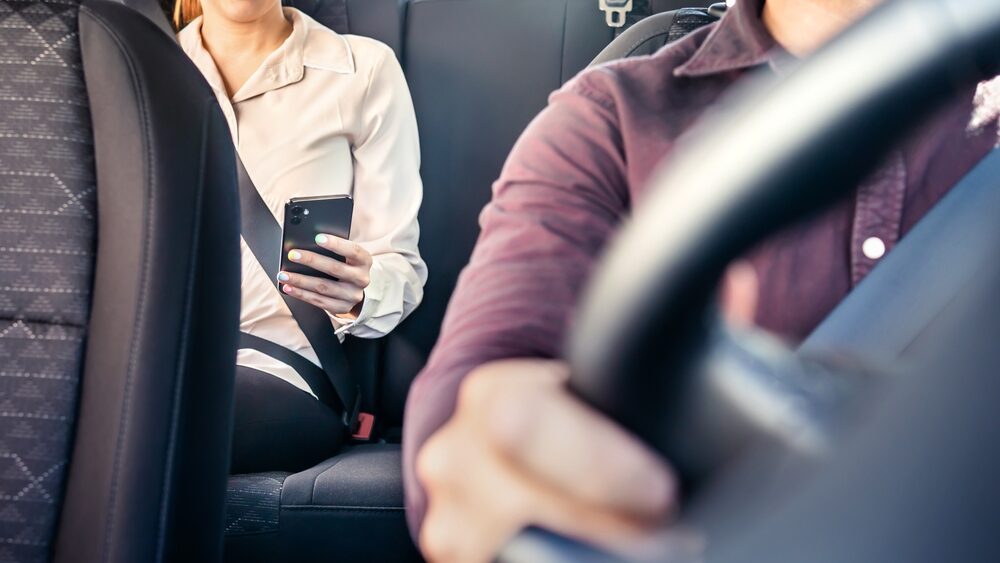How to File a Personal Injury Claim After an Uber or Lyft Accident in New Jersey: A Step-by-Step Guide

Accidents are unpredictable, and when you’re in a rideshare vehicle like Uber or Lyft, you might assume the process to file a personal injury claim is equally unpredictable. However, the reality is, while ridesharing accidents introduce a few unique wrinkles, the process of seeking compensation remains somewhat consistent. Below, we provide a detailed step-by-step guide on how to navigate this situation in New Jersey.
1. Ensure Safety First
Before anything else, ensure that you, the driver, and any other passengers are safe. If you can, move to a safe location away from the traffic. If you’re seriously injured, prioritize getting medical attention immediately.
2. Call the Police
Always report the accident to the police, even if the damages seem minor. They will create an official report which can be valuable evidence for your claim.
3. Gather Evidence at the Scene
This evidence will help support your claim and can significantly impact the outcome of your case. Remember, the more thorough and timely your evidence collection, the stronger your personal injury claim will be. If possible, consider contacting an attorney as soon as you can. They can guide you through the process and help ensure you gather all the necessary evidence for your case. This includes:
- Photos and Videos: Document the accident scene, damages to the vehicle, and any visible injuries.
- Witness Details: Collect names, phone numbers, and addresses of witnesses.
- Driver Information: Secure the rideshare driver’s name, license number, insurance details, and any other relevant information.
4. Seek Medical Attention
Even if you believe your injuries are minor, it’s essential to seek medical attention. This not only ensures your health but also provides documentation that your injuries resulted from the accident.
5. Report the Accident to the Rideshare Company
Both Uber and Lyft have platforms where you can report an accident. By notifying them, they can activate their insurance policies, which might cover your damages. Uber and Lyft have tiered insurance policies that offer coverage based on the driver’s status at the time of the accident:
- App Off: Driver’s personal insurance applies.
- App On, No Passenger, and No Ride Request: A limited liability coverage by the rideshare company might kick in if the driver’s personal insurance doesn’t cover all damages.
- App On, Ride Request, Accepted, or Passenger Onboard: The rideshare company’s full policy, which includes liability, uninsured/underinsured motorist, and contingent comprehensive and collision coverage, applies.
6. Gather All Relevant Documentation
This is a crucial step that can influence the success of your claim. Documents you’ll want to gather include:
- Police report
- Medical records detailing the nature and extent of your injuries
- Photographs
- Witness statements
- Receipts of any out-of-pocket expenses related to the accident (like medication or transportation costs)
7. Consult with a Personal Injury Lawyer
Navigating a rideshare accident claim can be complex due to the involvement of multiple insurance policies. It’s beneficial to consult with a firm experienced in these matters, such as CourtLaw Injury Lawyers. They can guide you on the best course of action, ensuring your rights are protected.
8. Determine the Liable Parties
Determining liability in a rideshare accident involving Uber or Lyft in New Jersey can be a complex process due to the unique nature of ridesharing services and New Jersey’s specific insurance and traffic laws. Here’s a breakdown of how to approach determining the liable parties:
Uber or Lyft Driver:
The driver might be liable if:
- They were at fault for the accident.
- They were not using the app (offline), in which case their personal auto insurance would typically be the primary source of coverage.
- They violated any traffic laws or regulations, leading to the accident.
Another Motorist:
Another driver might be liable if they were at fault for the accident. Their personal auto insurance would then typically be the primary source of coverage.
Pedestrians or Cyclists:
In some cases, pedestrians or cyclists could be held liable if their negligence or unlawful actions contributed to the accident.
Passenger Liability:
Though rare, there could be situations where a passenger’s actions (e.g., sudden distractions or interference) directly led to an accident, making them partially or wholly liable.
Government or Local Authorities:
If the accident was due to poor road conditions, malfunctioning traffic signals, or other infrastructure-related issues, the local municipality or state government might be liable.
9. Initiate the Claim Process
Your attorney will guide you through this step, which will generally involve:
- Notifying the at-fault party’s insurance company: This is a formal notice indicating your intention to seek compensation.
- Gathering further evidence: In some cases, more evidence may be required, such as expert testimonies or accident reconstruction.
- Negotiation: Most personal injury claims are settled out of court. Your attorney will negotiate with the insurance company on your behalf to get a fair compensation.
10. File a Lawsuit if Necessary
If negotiations break down and a settlement isn’t reached, your attorney might recommend filing a lawsuit. Your attorney will help determine against whom the claim should be filed: the rideshare company’s insurance, the driver’s personal insurance, or even your insurance (especially under Personal Injury Protection, given New Jersey’s no-fault system). In New Jersey, the statute of limitations for personal injury claims is two years from the date of the injury, so it’s crucial not to delay.
11. Stay Engaged and Informed
While your attorney will handle the bulk of the work, it’s vital for you to stay informed. Regularly check in, provide any additional information requested, and ask questions about anything you don’t understand.
12. Settlement or Trial
If a favorable settlement is reached during negotiations, you’ll receive compensation. If not, your case will go to trial, where the evidence will be presented, and a judge or jury will determine the outcome.
Contact an Experienced Personal Injury Lawyer at CourtLaw Injury Lawyers for a Free Consultation About Your Case Today
While the aftermath of a rideshare accident can feel overwhelming, remember that you’re not alone. Resources like this guide and the expertise of dedicated personal injury firms, such as CourtLaw Injury Lawyers, are at your disposal. Protect your rights and well-being by taking prompt action and seeking the representation you deserve.




